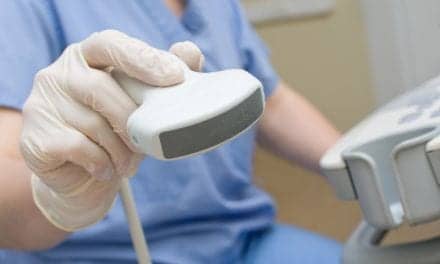Dutch researchers have released a paper that describes lung ultrasound characteristics in patients critically ill with COVID-19 pneumonia. The goal, in part, is to establish data that will ultimately make the technology more useful for diagnosing and monitoring the disease, according to reporting in News-Medical.Net.
This is the first time that ultrasound findings in a large cohort of patients with COVID-19 have been presented, in relation to baseline characteristics and using a standardized ultrasound technique. The findings show that ARDS is the most common lung presentation of COVID-19, with consolidation and interstitial pneumonia being present to variable extents between patients, but with a lower incidence of pleural effusion.
As the time since symptom onset increases, the trend of findings changes towards the increased likelihood of a thickened and irregular pleural line, pleural effusion, and C-profile. This agrees with the timeline of CT findings.
As many as a quarter of cases had non-diseased lungs on ultrasound. The investigators attribute this to the heterogeneous nature of lung involvement seen on CT, which means areas of the disease might not always be picked up. However, the LUS offers a vital clue to the presence of disease even in these lungs with an A-profile, in that one of the following is almost always seen: thickened pleural line, presence of the PLAPS, or a single BLUE-point showing a B-line.
This leads the researchers to recommend that when LUS is being carried out to diagnose COVID-19, a more comprehensive approach should be used. They recommend the 12-region protocol, which covers more of the lung than the current study’s BLUE-protocol.
Another option is to use a local B-line pattern or pleural line thickening as an indication of disease. They propose that this type of interpretation will become more necessary in the emergency setting, in which patients may not show pleural thickening or abnormalities of the PLAPS point. If these are set as criteria, many patients might be missed.
Read more from News-Medical.Net and find the study on MedRxiv.






